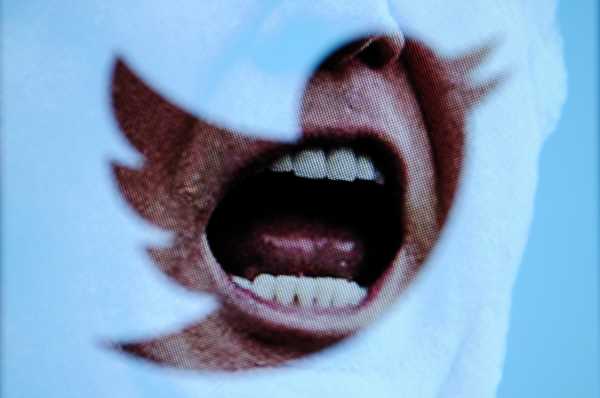
There’s a simple story for how the media is driving political polarization. Unlike in yesteryear, when there were three nightly newscasts and two local newspapers, the media today is fragmented, competitive, algorithmic. We watch MSNBC if we’re liberal, Fox if we’re conservative, and CNN if we just want to see people fight; Facebook and Twitter serve us up the news they’ve learned we like; we cocoon into echo chambers of like-minded partisans, opinions, and even facts; we don’t see or hear from the other side, and so of course we’re more polarized.
This story suggests a straightforward solution: If only we crossed the informational aisle, if only the liberals would watch a bit of Fox and the conservatives would spend some time with Rachel Maddow, we would realize the other side is more like us than we thought, that they make some good points too, and our enmity and polarization would ebb.
Beginning in October 2017, a group of political scientists and sociologists decided to test this theory. In the largest study of its kind ever conducted, they paid 1,220 regular Twitter users who identified as either Democrats or Republicans to follow a bot retweeting elected officials, media figures, and opinion leaders from the other side. The participants took regular surveys asking about their views on 10 issues ranging from immigration to government waste to corporate profits to LGBTQ rights. Those surveys — this will be important later — let them mark their view on a 7-point scale ranging from most conservative to most liberal.
The researchers were testing the collision between two popular models. In one, “contact between opposing groups can challenge stereotypes that develop in the absence of positive interactions between them.” In the other, “exposure to those with opposing political views may create backfire effects that exacerbate political polarization.”
It was, in other words, a test of the simple theory: Does hearing out the other side make us less polarized, or more?
The backfire theorists won the day. The results of the month-long exposure to popular, authoritative voices from the other side of the aisle was an increase in issue-based polarization. “We find that Republicans who followed a liberal Twitter bot became substantially more conservative posttreatment,” write the authors. “Democrats exhibited slight increases in liberal attitudes after following a conservative Twitter bot, although these effects are not statistically significant.”
The difference between the Democratic and Republican responses is interesting, and merits more study. But the key finding is that neither group responded to exposure to the other side by moderating their own views. In both cases, hearing contrary opinions drove partisans to more polarized positions — Republicans became more conservative rather than more liberal, and Democrats, if anything happened at all, became more liberal rather than more conservative.
I spoke to Christopher Bail, one of the study’s authors and the head of Duke University’s polarization lab. “For a long time, people have been assuming that exposing people to opposing views creates the opportunity for moderation,” he told me. “If I could humbly claim to figure out one thing, it’s that that’s not a simple process. If Twitter tweaks its algorithms to put one Republican for every nine Democrats in your Twitter feed, that won’t increase moderation.”
The study was tuned to tell us what happened when people heard other opinions; it wasn’t designed to illuminate why it happened. But Bail offered three theories.
The first possibility, he said, was counter-arguing. If you’re a liberal browsing Twitter and you’re suddenly confronted with a Mitch McConnell tweet touting the benefits of tax cuts and the harms of Obamacare, your mental response isn’t to think, “Hmm, that McConnell makes some good points.” It’s to instantly come up with an argument for why he’s wrong.
No one is better at convincing us of a position than, well, us, and so as we see and instantly reject the arguments made by our political opponents, we become more convinced in the rightness of what we initially believed, and we come up with more reasons to believe it.
Another possibility turns on the differing values of Democrats and Republicans. A strain of research called moral foundations theory shows that Democrats tend to construct their moral lives atop values like diversity, change, and fairness while Republicans build their moral frameworks atop values like authority, tradition, and certainty. Perhaps the reason Republicans reacted more strongly to being confronted with contrary views is that they’re more offended by challenges to authority, while Democrats have built more of an identity around openness to change.
The problem with that explanation, in my view, is that it seems to predict Democrats changing their views, which didn’t happen.
A third possibility is that the participants were taking cues from elites, including negative cues. A low-information Republican who didn’t know that much about what Democrats actually thought might find themselves more horrified by the liberal worldview when exposed to it regularly. If you’re not that interested in politics and your image of a Democrat is Hillary Clinton or Barack Obama, seeing a lot of tweets about abolishing ICE or kneeling during the national anthem might push you further right.
I tend to believe a variant of the first explanation. “Republican” is an identity. “Democrat” is an identity. When you log on to Twitter and read someone attacking the people you admire, the people you ally with, the people you see as your group, you become defensive of your side and angry at the critics.
One problem in all this is that most political media isn’t designed for persuasion. Some is, of course — Ross Douthat’s column at the New York Times is a soft conservative trying to persuade a liberal audience, for instance — but most opinionated political media is written for the side that already agrees with the author. Similarly, most partisan elected officials are tweeting to their supporters, who follow them and fundraise for them, rather than to their critics, who don’t.
During our conversation, Bail said something that actually made me laugh. The studies that show intergroup contact reduces polarization and suspicion also show that that contact needs to have certain features — it needs to be positive, there need to be shared goals, there ideally should be a reason for cooperation.
“Is Twitter capable of providing the context where people can deliver the intimate, interpersonal, positive contact needed for this?” He asked. The question answers itself.
Sourse: vox.com






